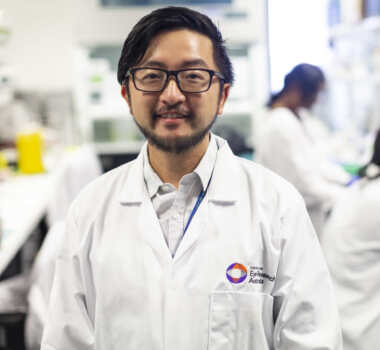6 November, 2025
The Board of Retina Australia is delighted to announce two new Research Grants awarded for 2026.
- Associate Professor Raymond Wong, from the Centre for Eye Research Australia and University of Melbourne, has been awarded a grant of $60,000 for the project “Development of epigenetic reprogramming technology to treat retinal degeneration”.
- Associate Professor Mohit Shivdasani, from the University of New South Wales, has been awarded a grant of $57,912 for the project “Selective Activation of Retinal Bipolar Cells Using Freeform Electrical Stimulation”.
Congratulations to Associate Professor Raymond Wong and Associate Professor Mohit Shivdasani!
Both grant projects will explore innovative new ways to deliver potential new treatments for inherited retinal diseases. We very much look forward to the outcomes of these exciting projects.

Development of epigenetic reprogramming technology to treat retinal degeneration
Grant awarded – $60,000
Chief Investigator (pictured above) – Associate Professor Raymond Wong, Centre for Eye Research Australia, University of Melbourne
Project Aim
This project aims to create a new way to “rejuvenate” cells using epigenetics reprogramming. The study will test if this new method can be used as a gene therapy to stop vision loss in animals.
If successful, it will provide the first proof-of-concept evidence to support epigenetic reprogramming to ‘rejuvenate’ the retina. It is expected to generate the critical preclinical data for further development of a novel gene therapy to treat blindness caused by loss of photoreceptors.

Selective Activation of Retinal Bipolar Cells Using Freeform Electrical Stimulation
Grant awarded – $57,912
Chief Investigator (pictured above) – Associate Professor Mohit Shivdasani, University of New South Wales
Project Aim
This project explores a new method called freeform electrical stimulation to restore vision in people with inherited retinal diseases (IRDs). Unlike current technologies that target retinal ganglion cells, this approach aims to stimulate bipolar cells, which are crucial for processing visual signals. Experts believe this could lead to clearer, more natural vision.
If successful, it could pave the way for next-generation vision restoration devices capable of high-resolution sight, enabling people to recognise faces, read, and navigate confidently.



